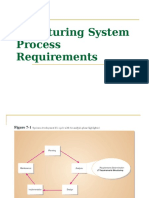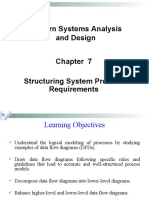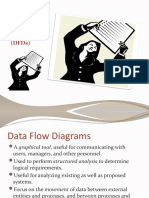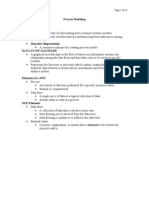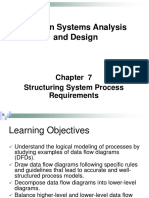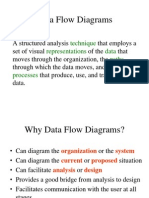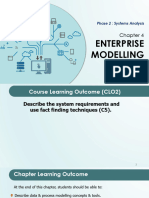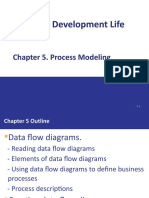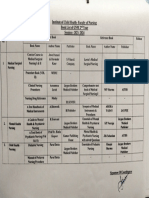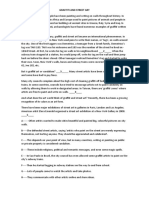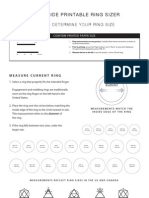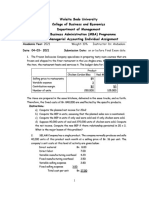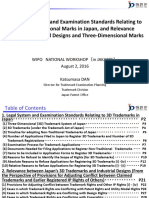0% found this document useful (0 votes)
51 views27 pagesLecture 8-Process Modeling Using DFDs
This document discusses process modeling using data flow diagrams (DFDs). It begins by outlining the objectives of drawing DFDs according to specific rules and guidelines. It then defines what process modeling and DFDs are, and explains the differences between logical and physical process models. The document describes the symbols used in DFDs and provides examples of DFD notation. It discusses how to draw DFDs through an iterative process of refinement. Finally, it outlines the general rules and guidelines for creating accurate and well-structured DFD models, including rules around processes, data stores, data flows, and stopping decomposition.
Uploaded by
fd2qcfb4bzCopyright
© © All Rights Reserved
We take content rights seriously. If you suspect this is your content, claim it here.
Available Formats
Download as PPT, PDF, TXT or read online on Scribd
0% found this document useful (0 votes)
51 views27 pagesLecture 8-Process Modeling Using DFDs
This document discusses process modeling using data flow diagrams (DFDs). It begins by outlining the objectives of drawing DFDs according to specific rules and guidelines. It then defines what process modeling and DFDs are, and explains the differences between logical and physical process models. The document describes the symbols used in DFDs and provides examples of DFD notation. It discusses how to draw DFDs through an iterative process of refinement. Finally, it outlines the general rules and guidelines for creating accurate and well-structured DFD models, including rules around processes, data stores, data flows, and stopping decomposition.
Uploaded by
fd2qcfb4bzCopyright
© © All Rights Reserved
We take content rights seriously. If you suspect this is your content, claim it here.
Available Formats
Download as PPT, PDF, TXT or read online on Scribd
/ 27
